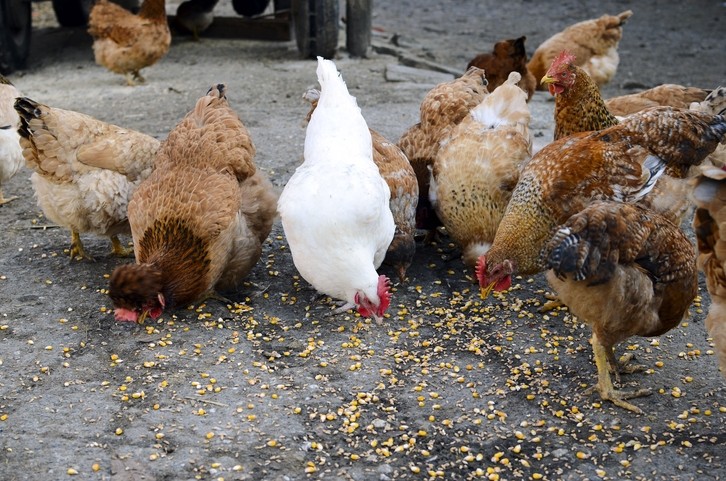US chicken producers call for equity in RFS talks

The National Chicken Council (NCC) called for more attention to be paid to feed prices during discussions of proposed changes to regulations governing the use and production of ethanol.
The organizations, which represents the companies responsible for producing about 95% of the poultry raised in the US, submitted public comments on the issue Monday ([April 29].
As users of feed corn, the poultry industry can be affected by changes to biofuel policy as it creates competition for the feed ingredient, the council said.
The changes proposed by the Environmental Protection Agency (EPA) would alter some of the rules regarding the production of gasoline blended with up to 15% ethanol (E15), according to information in the federal register. The proposal also seeks to change some pieces of the Renewable Fuel Standard (RFS) compliance system to address how the market for renewable identification numbers (RIN) works.
NCC concerns focus more on the use of E15 fuel and the implications the changes could have for poultry producers, the council said.
Although the change to the blending of E15 is focused on production during the summer months, the influence would last throughout the year, the NCC told us.
“The additional demand would be factored into the market and futures contracts,” a spokesperson with the NCC said. “The impact on corn prices comes from the production of ethanol which occurs year-round.”
“One of the arguments that the ethanol industry uses about the impact of the summer driving season ban on E15 is that the ban limits the use for E15 year-round because it causes disruptions in the supply chain,” he added. “According to this perspective, lifting the summer driving season would increase E15 use (and thus ethanol production to meet the demand) year-round.”
The NCC also is asking for a reconsideration of the interpretation used to govern how requests for waivers to the amount of ethanol produced are handled.
Changes to ethanol regulations
The proposed changes were open to public comment and a public hearing is expected to be set.
The changes were designed to establish “parity” in the way that the RVP for both E10 and E15 fuels are managed through regulations, said EPA. Work with RIN rules was intended to improve transparency and limit the possibility of market manipulation.
The proposed shift would alter the volatility requirements for E15 fuel from May through September 15, the agency said. The alteration would let E15 make use of the “1-psi wavier,” which allows gasoline and ethanol blends to have a higher Reid vapor pressure (RVP) than would typically be allowed.
Currently, the waiver only applies to gasoline and ethanol blends that have at least 9% and no more than 10% ethanol (E10), the agency said.
To make the shift, EPA is planning to “modify” its interpretation of the regulations involved, the agency said. E15 would then be held to the same gasoline volatility standards that are used with E10 during the summer.
“The primary consideration underlying the 1-psi waiver is to limit gasoline volatility while promoting the use of ethanol due to its importance to energy security and the agricultural sector,” the EPA said. “Today's proposed interpretation, if finalized, will continue to further these policy concerns given that agency action will now afford similar treatment to all ethanol-gasoline blends.”
The proposed RIN market reforms seek to prevent market manipulation, the EPA said. The changes including requiring public disclosure when RINs kept by an individual actor exceed set limits; requiring RIN retirement be made in real time; stopping entities other than specific parties from buying separate RINs, and cutting the time a non-obligated party can have a RIN.
Feed price and corn use
The NCC is asking the EPA to reconsider the proposed changes to E15 blending during the summer because the suggestions have not fully considered what effect it would have on poultry production or on the livestock industry, the council said.
“Providing a waiver to year-round E15 use will result in a rapid expansion of corn use under the RFS adding the potential for price and supply volatility in the corn market,” the group said in its remarks.
The request for the waiver process to be reconsidered is an attempt to make the evaluation process more equitable, the NCC said. The EPA has the ability to allow production to drop below the set amounts in specific circumstances using the “off-ramp” provision.
Previously, in situations where corn supplies were short and feed prices rose, requests were made for the waiver to be used, the NCC said. Both requests were denied on the basis that the mandated fuel production did not “severely harm the economy” and contributing to that harm was not enough.
“EPA is pursuing the E15 waiver based on a new interpretation of its statutory authority. EPA has changed the way it grants small refinery waivers under the RFS, effectively lowering the standard and granting more exemptions,” the spokesperson said.
“But EPA still has an impossibly rigid, unworkable standard for the off-ramp that is not consistent with Congressional intent in the 2007 Energy Independence and Security Act (EISA),” he added. “As EPA is trying to find a “win-win” situation between the ethanol and petroleum industries, chicken producers are only asking for equity as they have been left out of the equation.”
The council is suggesting that a new off-ramp could be established based as the E15 waiver would increase ethanol use and could present a greater challenge in a year when there were disruptions to the corn crop.
“The chicken industry is always one drought, freeze or flood away from another crisis,” the spokesperson added. “The E15 waiver raises the stakes and therefore should be a trigger for EPA to reconsider a workable off-ramp provision.”












